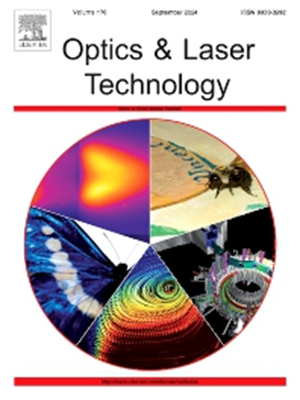Pressure calibration-free gas sensing based on transfer learning assisted wavelength modulation spectroscopy
IF 4.6
2区 物理与天体物理
Q1 OPTICS
引用次数: 0
Abstract
Pressure fluctuations significantly affect the accuracy and stability of traditional wavelength modulation spectroscopy (WMS) technology. To solve this problem, a novel pressure calibration-free gas sensor based on convolutional neural network (CNN) assisted calibration-free wavelength modulation spectroscopy (CF-WMS) was proposed and experimentally demonstrated. The transfer learning (TL) was introduced to fine-tune the CNN pre-trained on the simulated datasets, effectively addressing the issue of scarce experimental data. The performance of the proposed method was investigated and compared with the WMS technique, a sensitivity enhancement factor of 4.17 is achieved under the condition of atmospheric pressure fluctuations within a range of ± 10 mbar. Experimental results confirm the feasibility of utilizing deep learning to enhance WMS performance, particularly in conditions characterized by pressure fluctuations. This work indicates the potential of combining WMS with deep learning to promote the research in gas absorption spectroscopy.
求助全文
约1分钟内获得全文
求助全文
来源期刊
CiteScore
8.50
自引率
10.00%
发文量
1060
审稿时长
3.4 months
期刊介绍:
Optics & Laser Technology aims to provide a vehicle for the publication of a broad range of high quality research and review papers in those fields of scientific and engineering research appertaining to the development and application of the technology of optics and lasers. Papers describing original work in these areas are submitted to rigorous refereeing prior to acceptance for publication.
The scope of Optics & Laser Technology encompasses, but is not restricted to, the following areas:
•development in all types of lasers
•developments in optoelectronic devices and photonics
•developments in new photonics and optical concepts
•developments in conventional optics, optical instruments and components
•techniques of optical metrology, including interferometry and optical fibre sensors
•LIDAR and other non-contact optical measurement techniques, including optical methods in heat and fluid flow
•applications of lasers to materials processing, optical NDT display (including holography) and optical communication
•research and development in the field of laser safety including studies of hazards resulting from the applications of lasers (laser safety, hazards of laser fume)
•developments in optical computing and optical information processing
•developments in new optical materials
•developments in new optical characterization methods and techniques
•developments in quantum optics
•developments in light assisted micro and nanofabrication methods and techniques
•developments in nanophotonics and biophotonics
•developments in imaging processing and systems

 求助内容:
求助内容: 应助结果提醒方式:
应助结果提醒方式:


